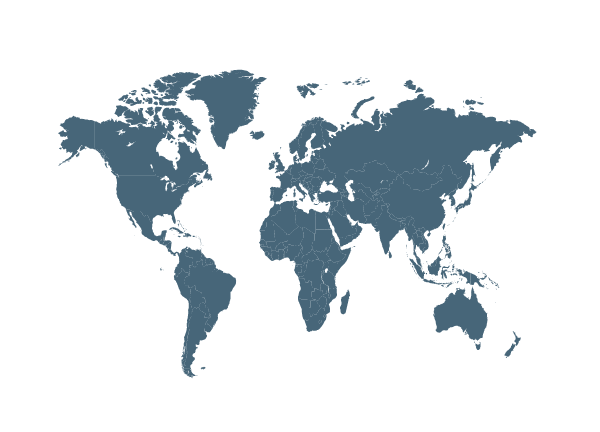On any given month...
How many times do you order take out or delivery?
How much do you spend per order on average?
How much do you spend on streaming services?
YOUR TOTAL SPENDING
Formula: (([.input-2] * [.input-1]) + [.input-3])
If you reduced your spending by:
YOU WOULD SAVE
Formula: (((([.input-2] * [.input-1]) + [.input-3])) * ([.input-4] / 100))
YOU COULD FEED
Formula: (((([.input-2] * [.input-1]) + [.input-3]) * ([.input-4] / 100)) * 10)
people
Calculation is based on data provided by
Feeding America.
A Closer Look at World Hunger

1
2
3
4
5
6
1
About 1 in 8 households in the U.S. with children can’t afford to buy enough food for their families.
2
More than 80 million children in Asia have experienced stunted growth due to extended periods of hunger and starvation.
3
Since early 2020 in Latin America and the Caribbean, 85 million children lost access to school feeding programs that provided their daily nutritional needs.
4
Food insecurity in the Mediterranean and in Central and Eastern Europe is significantly higher than in Northern and Western Europe.
5
The Middle East, Yemen, Syria, and Lebanon are highly affected by food insecurity and hunger because of rapid currency depreciation and rising inflation.
6
About 226.7 million people are starving in Africa and one in four people in Sub-Saharan Africa are starving.
1
2
3
4

5
6
1
About 1 in 8 households in the U.S. with children can’t afford to buy enough food for their families.
2
More than 80 million children in Asia have experienced stunted growth due to extended periods of hunger and starvation.
3
Since early 2020 in Latin America and the Caribbean, 85 million children lost access to school feeding programs that provided their daily nutritional needs.
4
Food insecurity in the Mediterranean and in Central and Eastern Europe is significantly higher than in Northern and Western Europe.
5
The Middle East, Yemen, Syria, and Lebanon are highly affected by food insecurity and hunger because of rapid currency depreciation and rising inflation.
6
About 226.7 million people are starving in Africa and one in four people in Sub-Saharan Africa are starving.
1
2
3
4

6
5
1
About 1 in 8 households in the U.S. with children can’t afford to buy enough food for their families.
2
More than 80 million children in Asia have experienced stunted growth due to extended periods of hunger and starvation.
3
Since early 2020 in Latin America and the Caribbean, 85 million children lost access to school feeding programs that provided their daily nutritional needs.
4
Food insecurity in the Mediterranean and in Central and Eastern Europe is significantly higher than in Northern and Western Europe.
5
The Middle East, Yemen, Syria, and Lebanon are highly affected by food insecurity and hunger because of rapid currency depreciation and rising inflation.
6
About 226.7 million people are starving in Africa and one in four people in Sub-Saharan Africa are starving.
1
2
3
4

5
6
1
About 1 in 8 households in the U.S. with children can’t afford to buy enough food for their families.
2
More than 80 million children in Asia have experienced stunted growth due to extended periods of hunger and starvation.
3
Since early 2020 in Latin America and the Caribbean, 85 million children lost access to school feeding programs that provided their daily nutritional needs.
4
Food insecurity in the Mediterranean and in Central and Eastern Europe is significantly higher than in Northern and Western Europe.
5
The Middle East, Yemen, Syria, and Lebanon are highly affected by food insecurity and hunger because of rapid currency depreciation and rising inflation.
6
About 226.7 million people are starving in Africa and one in four people in Sub-Saharan Africa are starving.
1
2
3
4

5
6
1
About 1 in 8 households in the U.S. with children can’t afford to buy enough food for their families.
2
More than 80 million children in Asia have experienced stunted growth due to extended periods of hunger and starvation.
3
Since early 2020 in Latin America and the Caribbean, 85 million children lost access to school feeding programs that provided their daily nutritional needs.
4
Food insecurity in the Mediterranean and in Central and Eastern Europe is significantly higher than in Northern and Western Europe.
5
The Middle East, Yemen, Syria, and Lebanon are highly affected by food insecurity and hunger because of rapid currency depreciation and rising inflation.
6
About 226.7 million people are starving in Africa and one in four people in Sub-Saharan Africa are starving.
1
2
3
4

5
6
1
About 1 in 8 households in the U.S. with children can’t afford to buy enough food for their families.
2
More than 80 million children in Asia have experienced stunted growth due to extended periods of hunger and starvation.
3
Since early 2020 in Latin America and the Caribbean, 85 million children lost access to school feeding programs that provided their daily nutritional needs.
4
Food insecurity in the Mediterranean and in Central and Eastern Europe is significantly higher than in Northern and Western Europe.
5
The Middle East, Yemen, Syria, and Lebanon are highly affected by food insecurity and hunger because of rapid currency depreciation and rising inflation.
6
About 226.7 million people are starving in Africa and one in four people in Sub-Saharan Africa are starving.